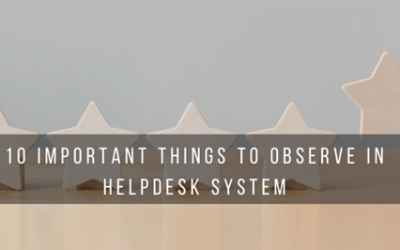Introduction
Customer retention is the cornerstone of long-term business success. A Customer Complaint Management System (CCMS) acts as a vital tool for retaining customers by addressing the customer sentiments be it positive or negative.
Such systems capture, manage, and resolve complaints, ensuring customers feel valued and heard. With the increasing emphasis on customer experience, a well-implemented Complaint Management Software can significantly boost satisfaction, improve brand loyalty, and reduce churn rates.
By prioritizing complaint resolution, and customer issues businesses can turn dissatisfied customers into brand advocates, driving growth and profitability.
Understanding Customer Complaint Management Systems
A Customer Complaint Management System is a structured framework designed to log, track, and resolve customer grievances efficiently. It integrates technology, processes, and customer service teams expertise to ensure a prompt and effective complaint resolution process. This faster resolution system improves communication between customers and businesses, fostering trust and long-term relationships.
Key Features of an Effective Complaint Management System
An effective Complaint Tracking Software includes automated complaint tracking, multi-channel integration, timely responses and advanced analytics dashboards. These features streamline issue resolution, enabling real-time updates and data-driven decisions.
It also offers escalation protocols to address critical concerns, ensuring every complaint receives the attention it deserves.
- Automated Complaint Tracking: Automatically logs and tracks complaint management process, ensuring no issue is overlooked and progress is monitored efficiently.
- Multi-Channel Integration: Allows customers to file common complaints through various channels like email, social media, and phone, providing convenience and accessibility.
- Analytics Dashboards: Complaints Management Software provides real-time data and insights to identify trends, improve processes, and make informed decisions.
- Escalation Protocols: Ensures efficient complaint resolution, and critical issues are flagged and escalated promptly to the appropriate teams for resolution.
- Customer Feedback Integration: Collects and integrates customer feedback post-resolution to measure satisfaction and identify areas for improvement. Additionally, follows a complaint analysis for business growth!
Importance of Customer Retention
Customer retention is more cost-effective than acquiring new customers. Retaining loyal customers leads to consistent revenue and strong word-of-mouth promotion.
- Lower Costs: Retaining a customer costs significantly less than acquiring a new one. According to studies, it is five times cheaper to retain existing customers than to attract new ones. For instance, Amazon’s Prime program offers exclusive perks such as free shipping, streaming services, and discounts, ensuring customer loyalty and encouraging repeat purchases. This strategy reduces the need for expensive marketing campaigns to attract new customers.
- Increased Revenue: Loyal customers tend to spend more over time, with research showing that they spend 67% more than new customers. Starbucks exemplifies this by leveraging its rewards program, which incentivizes repeat purchases through points, personalized offers, and free items. This approach not only boosts sales but also enhances customer engagement and loyalty.
- Stronger Brand Advocacy: Satisfied customers are more likely to recommend a brand to others, creating organic word-of-mouth promotion. Tesla’s referral program is a prime example, where existing customers receive rewards for referring new buyers. This not only expands Tesla’s customer base but also builds a community of brand advocates who actively promote the company.
- Reduced Churn Rates: Personalized services and experiences help keep customers engaged, reducing the likelihood of churn. Netflix utilizes advanced algorithms to provide tailored recommendations, ensuring users find content they enjoy. This personalization keeps customers satisfied and subscribed, minimizing cancellations and improving retention.
- Improved Insights: Retained customers provide valuable feedback that helps businesses refine their products and services. Apple’s Genius Bar is a notable example, where customers receive face-to-face support and troubleshooting. The insights gathered from these interactions help Apple identify common issues and improve their offerings, enhancing overall customer satisfaction and loyalty.
Role of a Complaint Management System
A CCMS plays a pivotal role in enhancing customer retention by addressing complaints promptly and effectively.
- Fostering Trust: Prompt resolution times significantly enhance customer trust. Companies like Zappos, Zomato, Nykaa are renowned for their customer service, addressing issues immediately with empathy and transparency. This approach ensures that customers feel valued and increases their confidence in the brand.
- Minimizing Churn: Resolving grievances efficiently reduces the likelihood of customer churn. For instance, Comcast’s improved complaint handling process allows them to quickly address service issues, resulting in better retention rates and improved customer satisfaction metrics. Addressing problems proactively ensures that customers remain loyal despite occasional setbacks.
- Encouraging Feedback: A CCMS encourages customers to provide feedback, helping businesses understand their needs better. Uber’s app makes it easy for users to rate rides and share concerns. This feedback loop allows the company to improve its services and ensure customer satisfaction.
- Streamlining Processes: By automating complaint tracking and resolution, a CCMS eliminates inefficiencies. Tools like Zendesk provide structured ticketing systems, ensuring that no issue goes unresolved. This streamlined approach not only saves time but also enhances the overall customer experience.
- Building Brand Reputation: Publicly addressing complaints on platforms like social media improves brand perception. Delta Airlines exemplifies this by resolving customer grievances promptly on Twitter, showcasing their commitment to customer satisfaction. These visible efforts build trust and demonstrate the company’s dedication to its customers.
The Connection Between Complaint Resolution and Customer Retention
Resolving complaints effectively strengthens customer loyalty, transforming unhappy customers into advocates.
- The Cost of Losing Customers: Losing a customer can cost up to 20 times their lifetime value, making retention crucial. By implementing comprehensive features in complaint management software, businesses can ensure quick and effective resolutions, ultimately boosting profitability. A well-structured customer complaint management system not only prevents churn but also enhances customer satisfaction by addressing their concerns thoroughly.
- Building Trust Through Efficient Handling: Companies like Nordstrom use customer complaint management software to treat every complaint as an opportunity to build trust. The efficiency of complaint resolution, paired with compliance with regulations, fosters a sense of reliability. Customers are more likely to remain loyal to businesses that address their issues transparently and empathetically.
- Increased Satisfaction: Quick and efficient resolutions, like those offered by Ritz-Carlton’s customer complaint management system, ensure customers feel valued. Comprehensive features such as real-time updates and insights into complaint data allow businesses to tailor solutions that meet customer expectations, ultimately enhancing satisfaction.
- Turning Complaints Into Opportunities: Businesses like Spotify leverage their complaint management software to gather insights into complaint data and make proactive improvements. By addressing user feedback effectively, they turn grievances into opportunities for innovation and service enhancement, fostering long-term customer loyalty.
- Creating Long-Term Loyalty: Consistently resolving issues using an efficient customer complaint management system builds lasting relationships. Companies like American Express excel in compliance with regulations and efficient complaint handling, ensuring customers feel valued and understood, which strengthens their commitment to the brand over time
How a Customer Complaint Management System Works
- Capturing and Categorizing Complaints: Systems like Salesforce’s Service Cloud efficiently log and categorize complaints for prioritization.
- Assigning and Resolving Issues: Clear workflows, and efficiency of complaint resolution, ensure timely resolutions, minimizing customer frustration.
- Monitoring and Feedback Mechanisms: Dashboards track progress, allowing teams to identify and address recurring issues.
- Escalation Protocols: Complex issues are escalated to ensure high-priority concerns are addressed promptly.
- Data Analytics for Insights: Reports generated by tools like HubSpot help identify trends and improvement areas.
Benefits of Implementing a Complaint Management System
- Improved Customer Satisfaction: Companies like Sephora utilize powerful tools within their complaint management software to address customer concerns quickly and effectively. Customizable workflows allow teams to handle issues systematically, ensuring that customers feel heard and valued. Real-time tracking of complaints enhances operational efficiency and ensures timely resolution, ultimately boosting customer happiness.
- Enhanced Brand Loyalty: Consistently resolving issues fosters trust and keeps customers returning. T-Mobile’s complaint resolution process includes self-service options and a single platform for customer interactions, making the experience seamless. This approach not only enhances satisfaction but also ensures long-term loyalty.
- Data-Driven Insights for Continuous Improvement: Brands like Nike leverage analytics and insights into complaint data to refine their processes. By tracking trends and identifying recurring issues, businesses can improve service delivery. These insights help businesses adapt and evolve, ensuring compliance with regulations and maintaining a high standard of customer support care.
- Reduced Operational Costs: Automating repetitive tasks in the complaint resolution process significantly reduces overhead. Slack’s support system integrates customizable workflows and real-time tracking, ensuring that resources are allocated efficiently. This operational efficiency translates into cost savings and improved profitability.
- Strengthened Brand Reputation: Publicly resolving complaints and maintaining compliance with service level agreements build credibility. Wendy’s use of social media to address customer grievances exemplifies this. By showcasing their commitment to resolving issues, they reinforce their brand’s reliability and dedication to customer satisfaction.
Key Challenges and Solutions
- Common Implementation Obstacles: Challenges like system integration can hinder success.
- Strategies for Overcoming Challenges: Providing training ensures teams use the system effectively.
- Scalability: Businesses must choose scalable solutions to accommodate growth.
- Data Security: Implementing robust measures prevents breaches and builds trust.
- User-Friendly Design: Simplified interfaces ensure higher adoption rates among teams.
Best Practices for an Effective Complaint Management System
Key Points:
- Training Staff for Empathy and Resolution: Employees trained in soft skills handle complaints better, enhancing experiences.
- Leveraging Technology and Automation: Automated workflows, like Freshdesk’s, streamline resolutions.
- Continuous Monitoring and Feedback Integration: Regular evaluations ensure the system evolves with customer needs.
- Personalizing Responses: Tailored responses, as seen with Airbnb’s support, improve outcomes.
- Proactive Communication: Keeping customers informed throughout the resolution process builds trust.
Future Trends in Complaint Management and Retention
Key Points:
- AI and Automation in Complaint Resolution: Tools like ChatGPT enable real-time responses and resolutions.
- Predictive Analytics for Proactive Solutions: Predictive tools identify and address issues before they escalate.
- Omnichannel Integration: Seamless support across platforms ensures better customer experiences.
- Increased Personalization: AI-driven systems offer tailored resolutions, improving satisfaction.
- Sustainability and Ethical Practices: Companies incorporating ethical practices attract and retain customers.
Conclusion
An effective Customer Complaint Management System, such as Wowdesk, not only resolves grievances but also strengthens customer loyalty. By addressing issues promptly, providing actionable insights, and fostering trust, businesses can enhance retention and create lifelong advocates. Investing in such a system is not just a solution but a strategic step toward sustained growth. Start your free trial now.




